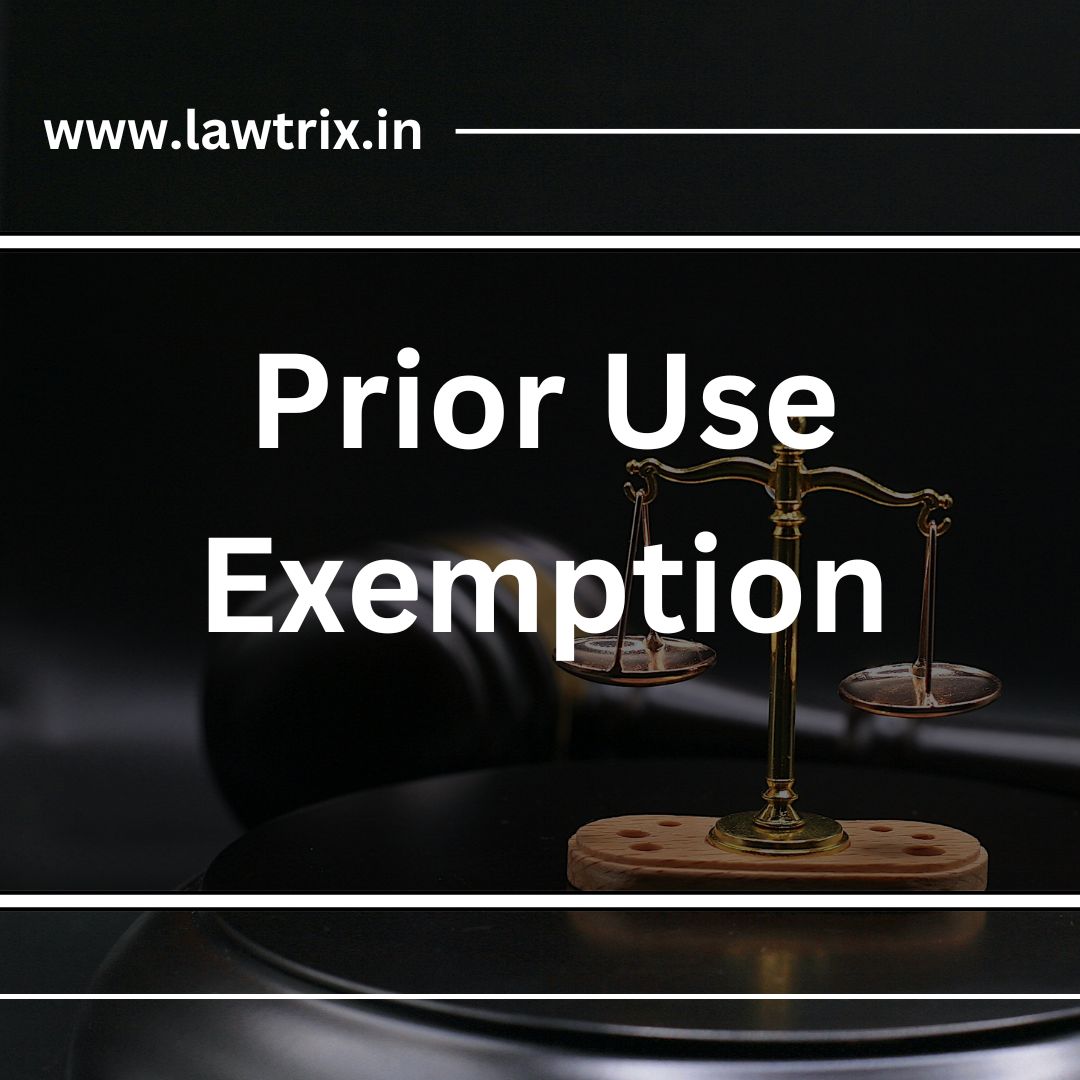


Prior Use Exemption
The
Prior Use Exemption is a legal principle that allows an individual or
entity to continue using a trademark, invention, or other intellectual property
if they can prove they were using it in good faith before another party
obtained formal rights, such as a trademark registration or patent grant. This
exemption serves to protect earlier users from losing their rights due to later
claims of ownership by others.
Key Areas of Application
1. Trademark Law:
o The prior use exemption applies when
a party has been using a trademark in a specific geographic area or market
before another party registered the same or a similar mark.
o Example: If a local business has
been using a brand name for years in a particular region and another company
registers the same name later, the local business may be allowed to continue
using the name under the prior use exemption.
2. Patent Law:
o In patent law, prior use exemption
may allow someone who was already using or commercially exploiting an invention
to continue doing so, even if another party subsequently patents the invention.
o This principle is particularly
important in jurisdictions with "first-to-file" patent systems, where
the first party to file a patent application typically gets the rights,
regardless of who invented it first.
3. Geographical Indications (GIs):
o In cases where a GI is registered,
entities that have been using the name in good faith for a particular product
may be allowed to continue under a prior use exemption, even if their use does
not meet the GI standards.
Requirements for Prior Use Exemption
To
claim prior use exemption successfully, certain criteria must typically be met:
1. Proof of Earlier Use:
o The user must demonstrate they were
using the trademark, invention, or product in good faith before the other
party's registration or grant.
o Evidence might include business
records, advertisements, invoices, or product labels.
2. Continuous Use:
o The use must have been continuous or
regular, rather than sporadic or abandoned.
3. Good Faith:
o The user must show that their use
was not intended to infringe or unfairly capitalize on another party’s
reputation or rights.
4. Limited Scope:
o In some cases, the exemption may
only apply within a specific geographic area or market where the prior use was
established.
Legal Framework in Different
Jurisdictions
1. India:
o Under Section 34 of the Trademarks
Act, 1999, the prior use exemption allows a person to continue using an
unregistered trademark if it has been in continuous use since before the
registered owner’s date of use or application.
Patent Laws Globally:
o Many countries, including the U.S.
(under the America Invents Act) and European jurisdictions, recognize
prior use defenses in patent disputes, allowing earlier users of an invention
to continue their use despite later patent grants.
Examples of Prior Use Exemption
1. Trademark Case:
o A small bakery in a local town has
been using the name "Sunrise Sweets" since 1995. In 2020, a national
chain trademarks the name "Sunrise Sweets." The bakery can claim
prior use exemption to continue using the name in its local market.
2. Patent Case:
o An inventor has been using a machine
for manufacturing goods since 2015. Another inventor patents a similar machine
in 2020. The first inventor may invoke prior use exemption to continue using
their machine without being accused of patent infringement.
3. Geographical Indication Case:
o A cheese producer has been using the
name "Alpine Delight" for its cheese since 2000. In 2025, the name is
registered as a GI for a specific region. The producer may qualify for prior
use exemption if they were in good faith and can prove earlier use.
Limitations of Prior Use Exemption
1. Geographic Restriction:
o Often limited to the geographic
region or market where prior use was established.
2. No Expansion:
o The exemption typically does not
allow the earlier user to expand their use beyond the original scope.
3. Burden of Proof:
o The onus is on the claimant to
provide compelling evidence of prior use.
4. Good Faith Requirement:
o Bad faith or attempts to profit from
another’s reputation can invalidate the exemption.
Importance of Prior Use Exemption
1. Fairness:
o Protects individuals and businesses
that have built goodwill or commercial use of a name, invention, or brand
before formal rights were acquired by others.
2. Encourages Innovation:
o Allows earlier innovators to
continue using their creations without fear of unjust interference from later
rights holders.
3. Preserves Local Markets:
o Ensures small, regional businesses
are not forced out by larger entities that register trademarks or patents after
the fact.
Conclusion
The
prior use exemption strikes a balance between encouraging innovation and formal
intellectual property registration while protecting earlier users who have
invested time and resources into their business or invention. It serves as a
safeguard against the retroactive enforcement of IP rights, ensuring that
established users can continue their legitimate practices.